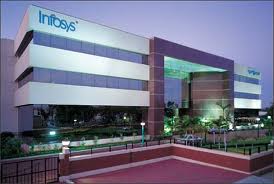There has been debate amongst investors about
Infosys ’ falling fortune after disappointing first quarter results. The scrip fell
around 10% in two trading sessions as the market priced in lower earnings
growth. On the other hand, TCS reported better-than-expected results, raising
questions on Infosys’ strategy and execution skills. One of the leading
business daily on Friday carried an article on the front page with title “IT’s
over for Infy: TCS is the new Bellwether”. There is no doubt that TCS is doing
excellent job in terms of operations and profitability, but investors must
chase stocks that promise good capital appreciation for the risk one is taking.
I am outlining four strong reasons why one
should bet on the Infosys for next three years.
Reason 1
Quarterly Net profit growth of 33%
When global as well as domestic economic
outlook is weak it’s very difficult for many good companies to show even higher
single digit growth. But Infosys, on the other hand, despite much adverse
business conditions reported 33% year-on-year growth in net profit for quarter
ended June 2012. I am not sure how many companies for the quarter would be able
to show over 25% growth in their net profit. In this context Infosys results
are good. Remember one is looking at TCS and then comparing with Infosys. But
one must understand that Infosys is in the process of overhauling its business
model and hence there could be short term pain before the strategy starts
paying off. Infosys management has said that they are here for the marathon and
not a sprint and hence one must have patience before jumping to any conclusion.
Many investors would recollect that Tata Motors incurred huge losses before it
entered the four wheeler passenger car businesses with launch of Indica in
1990s. Many investors had written off Tata Motors.
Reason 2
Excellent Valuations
Valuations make a company good or bad. While
one looks at share price of Infosys, its valuation is really looking
attractive. The company’s trailing 12 months price earnings is at 14.4 times
against TCS of 21.48 times. I strongly believe that TCS and Infosys P/E would
converge in next three years and hence makes sense to get into Infosys.
Infosys always commanded higher P/E against TCS despite having higher floating
stock.
Also if one looks at historical P/E of
Infosys, the counter looks attractive as lowest P/E it commanded in last ten
years was in 2009 when it stood at 13.3. At the same time, Infosys at present
is commanding lowest P/E amongst the top four IT firms. I am not sure how long
Infosys would continue at that level.
Historical P/E commanded by Infosys
Reason 3
Neat and clean Balance sheet
The company follows one of the best corporate
governance practice and has impeccable record of transparency. What is icing on
the cake is that it has cash and cash equivalent of Rs 20,596 crore as on June
2012. Going by the statements from the management I feel that it will use
this cash pile to acquire assets in next six months. Also the company ruling
out buy-back is a good pointer that acquisition is on cards. Even if
acquisitions do not happen, it will still be able to plough this cash very
well. Please note that company’s RONW is excellent with over 25% despite higher
cash and cash equivalents. Not many companies of this size have been able to
maintain operating profit margin consistently above 30% and RONW above 25%.
This shows excellent management bandwidth to navigate the uncertain business
environment and yet be able to create value for investors. It is one of the few
companies who have been paying consistent dividend (Rs 32 per share last year).
Reason 4
Risk Vs Returns favour returns
Looking at the valuations of the company I
would assume that there is no substantial downside on the counter from the
present level of Rs 2,223. But upside potential is at least 20% (around Rs
2,700) by March 2013. Please note that company’s market cap is Rs 1.25 lakh
crore and looking at the balance sheet and management bandwidth it’s unlikely
that market cap would take beating from this level.
So when domestic business scenario is
uncertain its make sense to get into a company that has low downside risk but
higher probability of capital appreciation. Also note that all negatives are
already priced in and hence one is unlikely to see major shock value in the
future. Any positive news would make the counter rally.
I would recommend Infosys share as a part of
your core portfolio.
Source :- Sunil Damania - investment
expert, Money Control.






